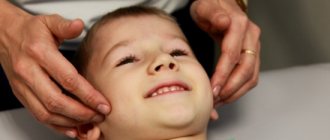1.General information
Stuttering, or logoneurosis, is one of the most common and, at the same time, complex problems, which specialists of various profiles - from teachers to neurosurgeons - are forced to deal with.
According to various estimates, among children, stuttering occurs in 8-10% of the general population, although this speech disorder can occur not only in childhood, but also at any other age, regardless of gender, place of residence, race and nationality. However, there is still a reliable and close connection with gender: boys suffer about three times more often, and it is more difficult to treat logoneurosis in them.
The periods when the developing central nervous system and, in particular, its speech functions are most vulnerable to disorganizing influences cover the age intervals from 2 to 4 and from 5 to 7 years, when the child receives (and must process, assimilate, remember) a huge amount of new information for him.
A must read! Help with treatment and hospitalization!
2. Reasons
The role of socio-psychological factors in the development of stuttering is well known and obvious. Such factors include situations of acute and chronic distress, psychotrauma, experienced states of shock (after which speech may be completely lost for some time, recovering with stuttering), socio-pedagogical neglect, unhealthy microclimate in the family, inflated levels of expectations and requirements for child, lack of attention and communication, unconscious and unreacted internal conflict, etc. Actually, this is why stuttering is classified as a neurotic disorder, because it is almost always based on one or another psychogenia.
However, the pathogenesis of the development of logoneurosis at the level of CNS functioning remains essentially unclear. Over the last century, a number of serious hypotheses and theories have been put forward, from psychoanalytic and behavioral to psycholinguistic and neurophysiological, but all of them, at best, are only more or less successful models that can answer some questions and do not solve the problem as a whole. Thus, until recently, the role of genetic factors was apparently underestimated (hereditary predisposition could explain, among other things, the predominance of males among those who stutter) and/or the significance of hormonal imbalance (in particular, abnormal concentrations of the neurotransmitter dopamine). To this day, it is unknown why logoneurosis occurs in such different variants and what exactly determines the clinical specificity under seemingly identical initial conditions.
It is not always possible to find a reason in the anamnesis (including in the sphere of the unconscious and repressed) that could be considered quite serious: many children and adults who have experienced more than severe psychological trauma do not show any signs of stuttering.
Electrophysiological, tomographic and other instrumental diagnostic methods also do not yet provide comprehensive information about the connections between stuttering and organic changes in the structures of the brain, in particular, Broca’s area, the functioning of which is directly associated with speech.
The situation is further complicated by the fact that stuttering often develops like a vicious vicious circle: a child with a speech disorder experiences enormous discomfort about his “inferiority” (especially if he is subjected to ridicule or other pressure), may withdraw, fall into a severe depressive state, begin to be afraid and avoid verbal communication in general, abandon all attempts and faith in the possibility of a cure; the growing intrapsychic tension, thus, according to the feedback principle, progressively aggravates logoneurosis.
Research in this area is being carried out in leading psychoneurological centers around the world, but today correction techniques (developed, for the most part, empirically) are more successful than attempts to create a consistent and fairly complete theoretical basis, which in turn would open the way to development of truly etiopathogenetic therapy.
Visit our Neurology page
Division by mental disorders and other manifestations
Another classification distinguishes neurotic and neurosis-like forms of stuttering. The second type is a consequence of a mental disorder, accompanied by impaired motor skills and loss of control over articulatory movements. Such children lag behind their peers in development. It should be noted that this type of speech disorder occurs secondarily and is always associated with deviations in the patient’s psyche. Changes are detected during MRI diagnostics or on an electroencephalogram.
The peculiarity of the neurotic form is that it is impossible to detect any changes during an instrumental examination. The disease affects children at 3-4 years of age and progresses rapidly. When alone with oneself, stuttering practically does not manifest itself, which is explained by the absence of stress and discomfort. Increased manifestations of stuttering occur in early school age and in adolescents. The pathology is characterized by a chronic course.
According to statistics, boys are 3-4 times more likely to suffer from stuttering than girls. This is explained by the fact that the dominant speech hemisphere of the brain is better developed in women than in men.
When hesitation occurs, the following additional signs arise: children may stomp their feet nervously, hit an object with their hand, or smack their lips. At first, this helps pronounce the phrase, but in the future it aggravates the course of the pathology.
Classification of stuttering is also carried out due to its occurrence:
- due to left-handedness;
- imitative character;
- associated with an unstable emotional background;
- secondary to anomalies of the organs of the speech apparatus.
Based on anatomical and physiological characteristics, children are divided into two groups: with pallidal syndrome and striatal syndrome. In the first case, they are inhibited, constrained, and do not get along well with others. In the second, there are obvious neuropsychic disorders, but the children are sociable and active, they are not bothered by stuttering.
Based on clinical manifestations, the following types are distinguished:
- congenital stuttering (pathology arose at the stage of intrauterine development, as a result of injuries, infections, somatic diseases);
- against the background of hesitations in speech, imbalance appeared;
- stuttering was preceded by hysterical reactions and severe neurosis;
- mentally unstable emotionality provoked a nervous breakdown.
A.F. Shelting (50s of the 20th century) also singled out hesitations in speech that arose due to ZRR associated with alalia. Such children suffer from general weakness, insufficiency of the muscles of the speech organs, and possibly tongue-tiedness. Stuttering in psychopaths with episyndrome, schizoids, and people with hysteria should be assessed separately (M.E. Schubert (1928)).
Another classification of pathology by N. M. Asatiani and V. G. Kazakov associated with mental disorders:
- stuttering is accompanied by organic damage to the central nervous system;
- with neurotic disorders;
- psychopathy;
- sluggishly progressive schizophrenia.
In general, division into types and groups is possible according to a number of characteristics. Each of the classifications can be used in clinical practice.
This is interesting! Children who live in large cities suffer from this speech disorder more often. Medical experts note the relationship with climate and pace of life.
3. Symptoms and diagnosis
As stated above, there are different variations of stuttering that are quite different from each other. In some cases, logoclonia predominates (involuntary repetition of sounds or syllables “at the start” of a phrase or word), in others the tonic component is pronounced - the need to pronounce a word causes overstrain of the facial muscles, tongue, and neck muscles.
Sometimes certain sounds are involuntarily stretched out (as if sung), or the patient cannot pronounce certain phonemes, while other combinations of sounds are verbalized without difficulty. Often, stuttering appears only in certain situations, and in a more comfortable environment for the patient it disappears without a trace.
There are four phases in the progression of logoneurosis: from preschool to “adult”, at the onset of which a stuttering person, as a rule, develops his own techniques for “smoothing out” or “masking” stuttering, gets used to almost automatically replacing words or sounds that are inaccessible to him with more convenient synonyms; in general, comes to terms with the presence of the disorder, more or less adapts and learns to live with it, as well as with a deeply rooted inferiority complex, fear and avoidance of communication, anxiety-depressive syndrome and other mental disorders, sometimes much more severe and pronounced than the primary stuttering.
However, under favorable conditions, correct parental behavior tactics, and a friendly attitude from the microsocial environment, in many cases there is a tendency toward a gradual reduction of stuttering. Complete elimination of speech disorder is observed in 50-80% of cases.
Diagnostics may require the involvement of specialized specialists - first of all, to identify or exclude a pathological organic background (residual consequences of birth trauma, latent neuroinfections, tumors, etc.), as well as to assess the general psychological state, constitutional personality type and other factors, important in terms of future treatment.
About our clinic Chistye Prudy metro station Medintercom page!
Nature of speech disorders
Stuttering is provoked by spasms of the articulatory system of the human speech apparatus, which occur during the utterance of a sound or word. This speech delay can worsen at the beginning of a word or in its middle.
During spasms, a person feels as if he does not have enough air to pronounce it in full. Shortness of breath appears, the face and expression of the eyes are distorted. The speaker wants to say the word quickly so that his speech impediment is not so noticeable, but under the influence of excitement or stress, stuttering appears more often. This makes it difficult to live in peace: during an important phone call, at a business conference, a person cannot say it, sometimes out of despair he completely gives up the idea of expressing his thoughts.
In more severe stages, there is a fear of certain words or combinations of letters, a tendency to reduce efforts to express thoughts, and the replacement of difficult-to-pronounce fragments with others. Sometimes a phobia of spontaneous communication even appears.
Such people, if they do not receive proper support from others, become withdrawn and unsure of themselves, and develop unjustified complexes. They are sensitive to ridicule or criticism addressed to them, especially from members of the opposite sex. Earning their trust is sometimes difficult, but they value true friends. These are ordinary people who consider themselves different from everyone else. They feel uncomfortable in front of others, but this complex is simply worth overcoming.
Types of stuttering
There are several types of stuttering. They differ in the reasons for their occurrence and the nature of their expression.
- Tonic stuttering - a person stops at the same syllable, word or sound, without being able to say a new word. Incorrect contraction of the muscles involved in speech appears.
- Clonic stuttering is the repetition of the same sounds, syllables or words over and over again.
- Neurotic stuttering occurs in children as a result of exposure to stress and fear.
- The neurosis-like appearance is associated with diseases of the nervous system, both acquired and inherited.
4.Treatment
Currently, there are many effective methods for treating stuttering. The primary task is to normalize the attitude towards the disorder and develop a constructive, cooperative position in the patient himself, as well as in his immediate family. It is equally important to examine and, if necessary, adjust the system of intrafamily relations. Various psychotherapeutic techniques of relaxation, distraction, coping (overcoming) fears and mental blocks, teaching autosuggestive techniques, and desensitization are used. Systems of special speech therapy gymnastics, massage, and breathing have been developed. Sometimes drug support is used (tranquilizers, antispasmodics, antidepressants), in other cases it is not indicated and is inappropriate.
If an organic pathology of the central nervous system is detected, a course of adequate neurological treatment or neurosurgical intervention is prescribed (as indicated).
Today, in most cases, it is possible to achieve a complete cure or at least a radical reduction of logoneurotic symptoms. It is very important to seek help at the initial stage, at the first signs of disturbances in rhythm and fluency of speech, when the disorder has not yet acquired the character of stagnant fixation with a lot of secondary psychological consequences.










